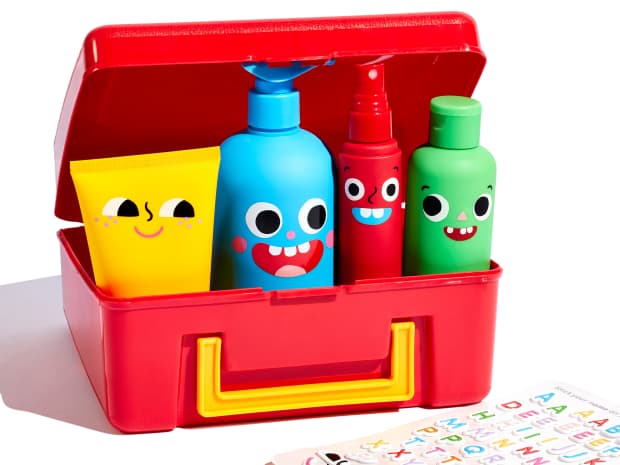
11 Best Nontoxic Bath Time Products for Kids
We've pulled the top 11 bathtime products as determined by Grove members. Select from any on the list and get them delivered to your door!
Read More
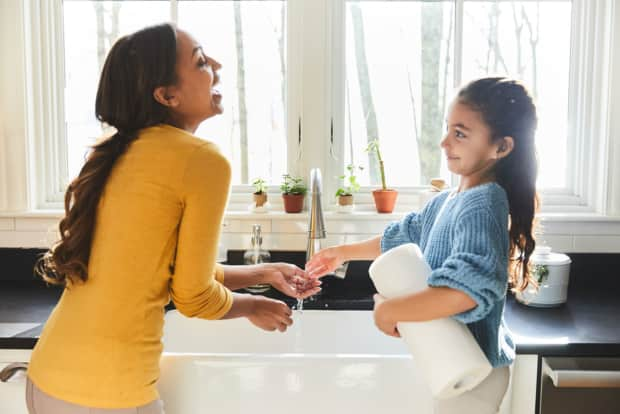
Last Updated: June 29, 2022
Take out the trash in your kiddo's routine, and teach them how to reduce waste and make environmentally friendly choices at home and on the go.
Children are our future. They are also voracious little consumers. Before you know it, the trash can really start to pile up. That’s why we’ve got some easy tips on how to reduce waste at home — scroll down and start reducing.
Plastic pollution is a big problem today. Here are the facts:
Americans produce 4.9 pounds of trash per person every day, and most of it ends up in the landfill, where it pollutes the air and nearby water sources.
And, around 24 billion pounds of plastic enter the oceans every year, killing over 1 million marine animals.
By purchasing thoughtfully and reducing plastic production and waste in general, we can reduce the amount of plastic sent to landfills and the oceans.
Fortunately, kids have a soft spot for animals, and it’s easy to teach them about the environment and how to protect animals. The best way to show kids how they can help the environment is by modeling, including picking up trash while you’re on a walk, composting at home, and using less water.
Keep a running commentary as you recycle and make eco-friendly swaps that help reduce your plastic consumption.
Show them from an early age all the ways kids can use less plastic, reduce waste, and choose healthy, natural, and sustainable products to lower their environmental impact.
Here are some other great ways to start.
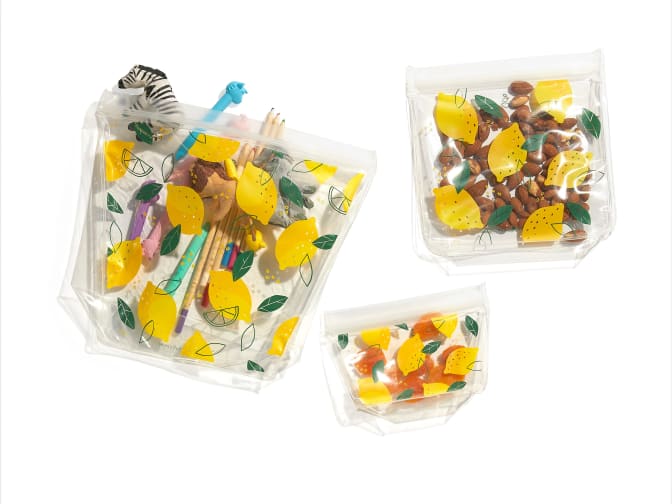
Every parent's bag is filled with snacks to tide kids over as you take on your day. All these little treats add big waste to the trash bin, especially when they come individually wrapped in disposable packaging or when you load them up in disposable plastic bags.
Let kids choose their reusable storage bags in fun designs, which also come in a range of different size options and gusseted bottoms that allow them to stand up on their own. They are easy to rinse out and should hold up to years of use. And switch to stainless steel reusable water bottles with plastic-free straws for even more convenience.
Teach sustainability early by having kids help buy healthy snacks in bulk instead of individually wrapped versions. Plan a trip to the farmer’s market or bulk bin section at the grocery store and bring your reusable bags along.
And learn about ways to reduce takeout food plastic and waste so you can teach the kiddos even more.
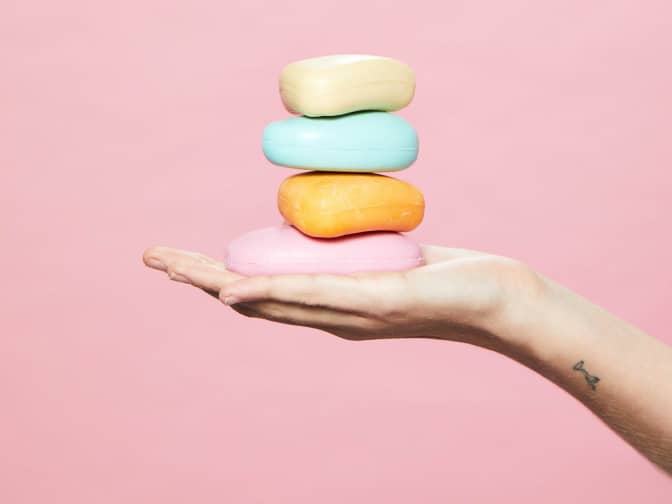
Bathtime for kids often involves myriad plastic bottles full of bubble bath, body wash, shampoo, and conditioner.
Swap the bottles for more eco-friendly packaging and products that contain plant-based ingredients that won’t harm your child — or the environment.
Try swapping out some of the worst plastic waste offenders with the 4 tips below.
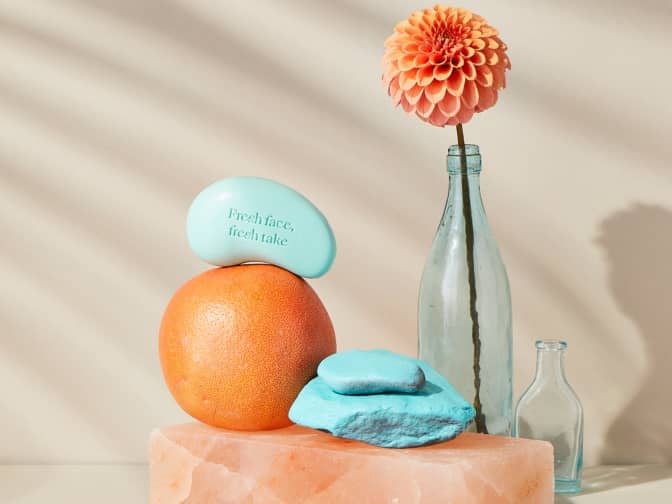
Shampoo and conditioner bars produce as much lather as regular shampoos and are usually packed in recyclable paper packaging. Soap bars provide as much moisture now as most body washes and take up less bath storage space.
Plus, bar soaps fit in little hands a lot easier than big plastic bottles so kids can start to bathe themselves — win-win.
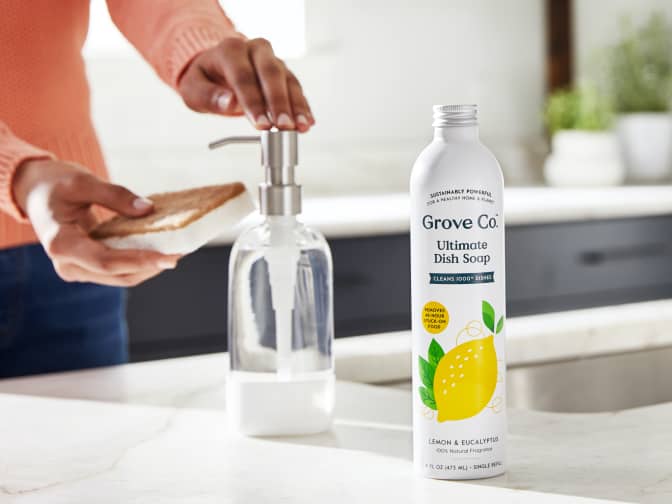
Foaming hand soap, shampoo, conditioner, body wash, and even bubble bath are available in concentrates or refill packs. These low-waste alternatives use minimal packaging and more cost effective.
Ask kids to help find pretty dispensers to put their refills in so they know which products are theirs.

Switching to natural bath toys, bath bombs, bath crayons, and more means that not only will they be safe for playing but that they also will most likely come in eco-friendly packaging and contain less plastic.
Have kids help recycle or compost the packaging after they're done playing!
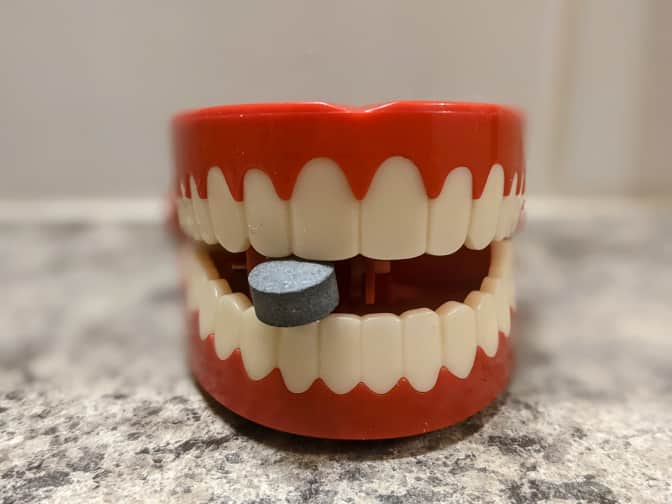
Try this plastic-free alternative to traditional toothpaste in a delicious natural watermelon flavor. Toothpaste tablets come in little tabs that you bite up to create a paste inside of your mouth for brushing your teeth.
Bonus: Remind kids about turning off the water while brushing to conserve!
GROVE TIP
Infants and toddlers go through an astonishing number of diapers. Not only are most diapers going to end up bogging down the landfill, but they also contain chemicals that are terrible for the environment and not much better for your baby's skin.
Make the switch to eco-friendly diapers and wipes made from sustainably harvested materials and treat your baby and the earth to their benefits.
Any parent of a little one knows how quickly the toy situation can get out of hand, cluttering up the play space with a sea of plastic.
Try these helpful tips to reduce plastic toy accumulation and waste.

When kids can keep track of everything they have, you're less likely to over-purchase or duplicate with more toys.
Have kids help pick out colorful, non-plastic storage options so they're excited to use the bins.

Instead of throwing away toys when your kids outgrow them, encourage them to bag them up for donation.
Make it a fun holiday tradition to take stock, pare down, and make another kid’s birthday dream by donating to a local organization or toy drive.

While you’re at the donation site, see if you can shop second-hand for more toys or clothing for your own kids.
Teaching kids about shopping second-hand is a great moment to focus on reducing waste and reusing, instead of throwing away.

As you shop for toys, keep health and safety in mind. PVC is a common material used in children's toys, and it offers plenty of dangers — especially when kids are at an age when things end up in their mouths.
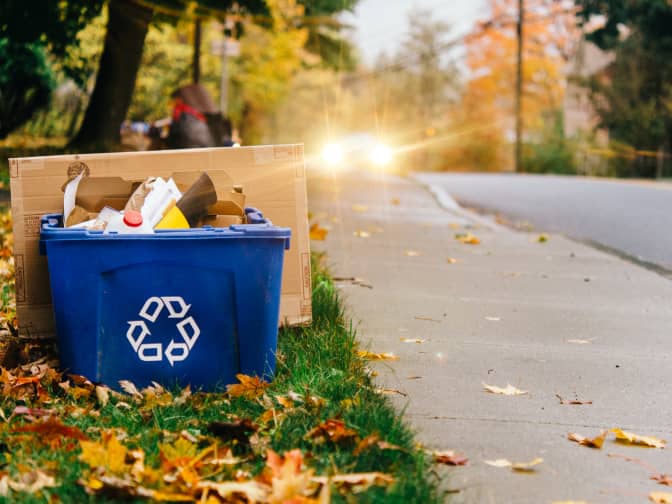
How many times a day do you take a trip to the trash can or the recycling bin? Make every one of those instances a teaching opportunity for your youngster by working together to minimize waste throughout the home.
A lot of the same techniques that help adults reduce their carbon footprint can be applied to kids too. And when taught from a young age, they'll never know any other way than the eco-friendly way.
Try starting as a family with the 3 easy tips for reducing waste around the home below.
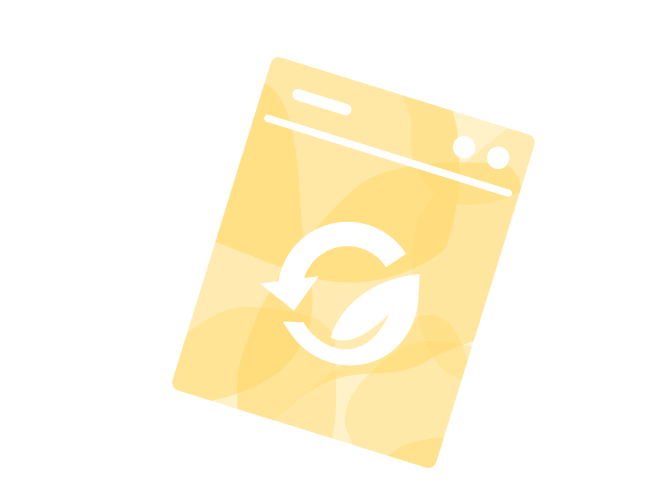
Putting towels in the hamper after a single use wastes water, laundry detergent, and energy.
Give the kids hooks in their bathroom that make it easy to hang their towels up, and have them use them several times before washing.
Bonus: Teach them about rewearing clothes that may not need to be washed right away too.

Instead of reaching for another roll of paper towels at the store, consider an eco-friendly alternative, such as reusable paper towels or microfiber cloths.
Not only will this quick swap-out save the landfill, but you can get kids in on the cleaning with these safe, healthy, and colorful products.
Bonus: Switch to cloth napkins to save paper waste during meals.
Once you show them the different ways to minimize waste, start conversations about how to reduce plastic use, reuse plastic, and recycle plastic and glass containers.
Pasta sauce jars can be used for sorting and storing children's art supplies or their marble, rock, or bug collection. Make a game out of collecting reusable trash items throughout the week and then come up with fun crafts and projects for them.

We've pulled the top 11 bathtime products as determined by Grove members. Select from any on the list and get them delivered to your door!
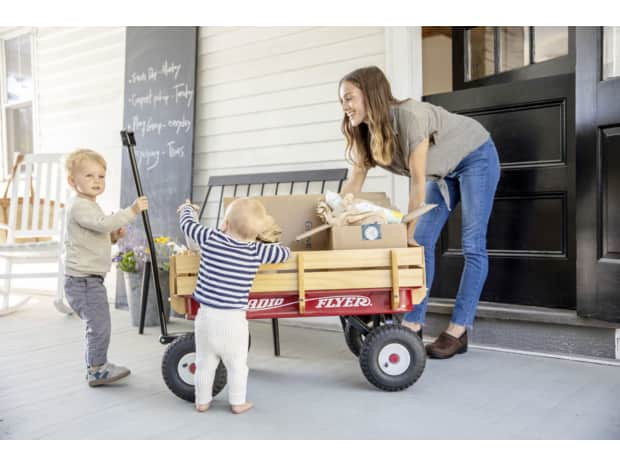
Recycling makes us all feel virtuous and holy, but you might be unknowingly poking holes in the process by "wish" recycling non-recyclable items.

We’ve compiled the ultimate back-to-school cleaning guide to ensure your little one starts the school year off safe and healthy. Read on!
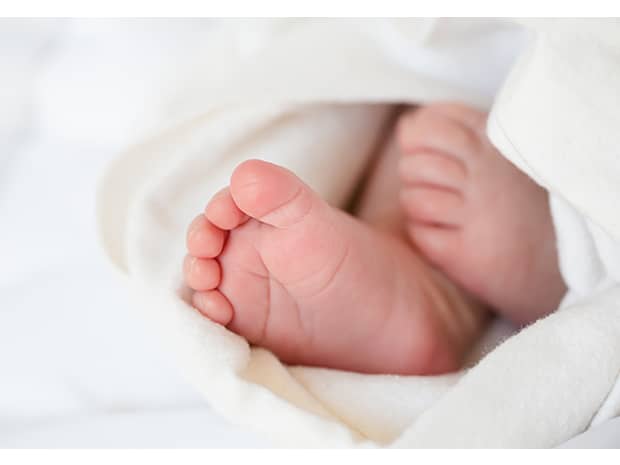
We've pulled the top 25 natural baby products as determined by Grove members. Select from any on the list and get them delivered to your door!
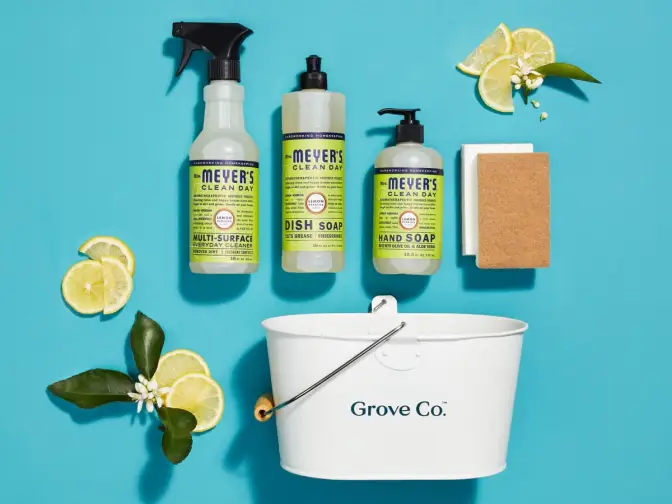
Wondering who Grove is, what types of products we offer, and how to get a free gift set when you sign up? Learn more about flexible monthly shipments, customizing your shipment, and joining millions of happy households — no monthly fees or commitments required.